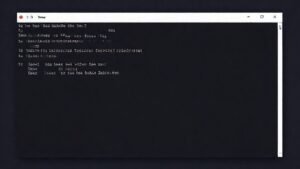Unlocking Reality: The Power of Quantum Entanglement
- THE MAG POST

- Aug 11
- 10 min read

Delving into the intricacies of quantum entanglement reveals a phenomenon that challenges our classical understanding of the universe. Quantum entanglement, often described as 'spooky action at a distance' by Einstein, links two or more particles in such a way that they become interconnected, regardless of the distance separating them. This means that the quantum state of one particle is instantaneously correlated with the state of the other, a concept that has profound implications for quantum computing, quantum cryptography, and our fundamental understanding of reality. The exploration of quantum entanglement not only pushes the boundaries of physics but also opens up new avenues for technological innovation, promising to revolutionize fields ranging from secure communication to advanced computation.
Understanding the Basics of Quantum Entanglement
To truly grasp the essence of quantum entanglement, one must first understand the concept of superposition. Superposition, a cornerstone of quantum mechanics, allows a particle to exist in multiple states simultaneously until measured. Imagine a coin spinning in the air; it is neither heads nor tails until it lands. Similarly, a quantum particle can be in multiple states at once. When two particles become entangled, their fates are intertwined, and the measurement of one particle instantaneously determines the state of the other, irrespective of the distance between them. This interconnectedness defies classical physics, where objects are independent and localized. The phenomenon of quantum entanglement challenges our intuition about space and time, suggesting a deeper, more interconnected reality at the quantum level.
The process of creating quantum entanglement typically involves bringing two or more particles into close proximity and allowing them to interact. This interaction can be achieved through various methods, such as particle collisions or the use of special crystals that split photons into entangled pairs. Once entangled, these particles maintain their correlation even when separated by vast distances. The strength of this correlation is what makes quantum entanglement so intriguing and potentially useful. It's not merely a statistical correlation; it's an instantaneous connection that transcends the limitations of classical communication, where information transfer is bound by the speed of light. The creation and manipulation of entangled particles are at the heart of many quantum technologies.
One of the most fascinating aspects of quantum entanglement is its apparent violation of locality, the principle that an object is only directly influenced by its immediate surroundings. In classical physics, any influence must travel through space and time, adhering to the speed of light. However, quantum entanglement seems to bypass this limitation, with the state of one particle instantaneously affecting the state of its entangled partner, regardless of the distance. This has led to numerous debates and interpretations, with some physicists suggesting that quantum entanglement implies a deeper, non-local reality where space and time are not as fundamental as we perceive them to be.
Despite its counterintuitive nature, quantum entanglement is a well-established experimental phenomenon. Numerous experiments have confirmed the existence of these correlations, ruling out alternative explanations based on classical physics. These experiments often involve measuring the polarization or spin of entangled photons or electrons, demonstrating that the measurement outcomes are correlated in a way that cannot be explained by local realism. The ongoing refinement of these experiments continues to solidify our understanding of quantum entanglement and its implications for the foundations of physics. As technology advances, so too does our ability to probe the mysteries of this bizarre phenomenon.
Practical Applications of Quantum Entanglement
The unique properties of quantum entanglement are not just of theoretical interest; they also hold immense promise for various practical applications. One of the most exciting areas is quantum computing, where entangled particles, or qubits, can be used to perform computations that are impossible for classical computers. Quantum computers leverage the superposition and quantum entanglement of qubits to explore multiple possibilities simultaneously, potentially solving complex problems in fields such as drug discovery, materials science, and cryptography. The development of stable and scalable quantum computers is a major goal of researchers worldwide, with quantum entanglement serving as a crucial resource for achieving this.
Another significant application of quantum entanglement lies in the field of quantum cryptography. Quantum key distribution (QKD) protocols use entangled photons to establish secure communication channels. The laws of quantum mechanics guarantee that any attempt to eavesdrop on the channel will inevitably disturb the quantum entanglement, alerting the legitimate parties to the presence of an eavesdropper. This provides an unprecedented level of security, as the security of the communication is based on the fundamental laws of physics rather than the computational complexity of mathematical algorithms. Quantum cryptography promises to revolutionize secure communication, protecting sensitive data from cyberattacks.
Quantum entanglement also plays a crucial role in quantum teleportation, a process where the quantum state of one particle is transferred to another particle, even if they are separated by a distance. It's important to note that quantum teleportation does not involve the transfer of matter or energy; rather, it's the transfer of quantum information. This process relies on quantum entanglement to establish a connection between the sender and receiver, allowing the quantum state to be faithfully reconstructed at the destination. Quantum teleportation has potential applications in quantum communication and quantum networking, enabling the secure and efficient transfer of quantum information.
Beyond computing and communication, quantum entanglement is also being explored for its potential in quantum sensing and metrology. Entangled particles can be used to create highly sensitive sensors that can detect minute changes in physical quantities such as magnetic fields, gravity, and temperature. These quantum sensors could have applications in a wide range of fields, from medical diagnostics to environmental monitoring. The enhanced precision offered by quantum entanglement could lead to breakthroughs in various areas of science and technology, enabling us to probe the universe with unprecedented accuracy.
The development of technologies based on quantum entanglement is still in its early stages, but the potential benefits are enormous. As researchers continue to unravel the mysteries of this phenomenon and develop new ways to manipulate entangled particles, we can expect to see even more innovative applications emerge in the future. From quantum computers that can solve the world's most complex problems to secure communication channels that are impervious to eavesdropping, quantum entanglement promises to transform our world in profound ways.
The Role of Quantum Entanglement in Quantum Computing
Quantum entanglement is the backbone of quantum computing, enabling the creation of qubits that can exist in multiple states simultaneously. Unlike classical bits, which can only represent 0 or 1, qubits can exist in a superposition of both states, thanks to the principles of quantum mechanics. This superposition, combined with quantum entanglement, allows quantum computers to perform calculations that are impossible for classical computers. By entangling multiple qubits, quantum computers can explore a vast number of possibilities simultaneously, potentially solving complex problems in fields such as drug discovery, materials science, and cryptography.
The power of quantum entanglement in quantum computing lies in its ability to create correlations between qubits. When qubits are entangled, their fates are intertwined, and the measurement of one qubit instantaneously affects the state of the others. This interconnectedness allows quantum computers to perform parallel computations, exploring multiple solutions simultaneously. The more qubits that are entangled, the greater the computational power of the quantum computer. However, maintaining quantum entanglement is a challenging task, as qubits are highly susceptible to noise and decoherence, which can disrupt the delicate quantum states.
One of the key challenges in building quantum computers is maintaining the coherence of qubits. Coherence refers to the ability of a qubit to maintain its superposition and quantum entanglement over time. Environmental noise, such as vibrations and electromagnetic radiation, can cause qubits to lose their coherence, leading to errors in computations. Researchers are exploring various techniques to improve the coherence of qubits, including using exotic materials, isolating qubits from the environment, and implementing error correction codes. Overcoming the challenges of decoherence is crucial for building practical quantum computers.
Quantum entanglement also plays a crucial role in quantum algorithms, which are specifically designed to take advantage of the unique properties of quantum mechanics. One of the most famous quantum algorithms is Shor's algorithm, which can factor large numbers exponentially faster than the best-known classical algorithms. This has significant implications for cryptography, as many encryption algorithms rely on the difficulty of factoring large numbers. Another important quantum algorithm is Grover's algorithm, which can search unsorted databases quadratically faster than classical algorithms. These quantum algorithms demonstrate the potential of quantum computers to solve problems that are intractable for classical computers.
The development of quantum computers based on quantum entanglement is still in its early stages, but the progress is accelerating rapidly. Researchers are exploring various approaches to building qubits, including superconducting circuits, trapped ions, and topological qubits. Each approach has its own advantages and challenges, and it is not yet clear which technology will ultimately prevail. However, the potential benefits of quantum computing are so great that researchers are investing heavily in this field, with the hope of unlocking the full potential of quantum entanglement to revolutionize computation.
Quantum Entanglement and Quantum Communication
Quantum entanglement offers revolutionary possibilities in the realm of quantum communication, primarily through quantum key distribution (QKD). QKD leverages the fundamental principles of quantum mechanics to establish secure communication channels, ensuring that any attempt to eavesdrop on the channel will inevitably be detected. This is achieved by encoding information onto entangled photons and transmitting them between the sender and receiver. The unique properties of quantum entanglement guarantee that any disturbance to the photons will alter their quantum state, alerting the legitimate parties to the presence of an eavesdropper. This provides an unprecedented level of security, as the security of the communication is based on the laws of physics rather than the computational complexity of mathematical algorithms.
The security of quantum communication protocols based on quantum entanglement relies on the no-cloning theorem, which states that it is impossible to create an identical copy of an unknown quantum state. This means that an eavesdropper cannot intercept the entangled photons, measure their quantum state, and then create copies to send on to the receiver without being detected. Any attempt to measure the quantum state of the photons will inevitably disturb them, introducing errors into the communication channel. These errors can be detected by the legitimate parties, alerting them to the presence of an eavesdropper. The no-cloning theorem is a fundamental principle of quantum mechanics that underpins the security of quantum communication.
One of the key challenges in implementing quantum communication systems based on quantum entanglement is the loss of photons during transmission. Photons can be absorbed or scattered by the environment, leading to a reduction in the signal strength. This is particularly problematic over long distances, where the signal can become too weak to be detected. Researchers are exploring various techniques to overcome this challenge, including using quantum repeaters, which can amplify the signal without disturbing the quantum entanglement. Quantum repeaters are a crucial component of long-distance quantum communication networks.
Quantum entanglement also enables the possibility of quantum teleportation, a process where the quantum state of one particle is transferred to another particle, even if they are separated by a distance. Quantum teleportation does not involve the transfer of matter or energy; rather, it's the transfer of quantum information. This process relies on quantum entanglement to establish a connection between the sender and receiver, allowing the quantum state to be faithfully reconstructed at the destination. Quantum teleportation has potential applications in quantum communication and quantum networking, enabling the secure and efficient transfer of quantum information.
The development of quantum communication technologies based on quantum entanglement is progressing rapidly, with several companies and research institutions working on building practical quantum communication systems. These systems could have a wide range of applications, from securing financial transactions to protecting sensitive government communications. As quantum computers become more powerful, the need for quantum-resistant cryptography will become even more critical, making quantum communication an essential technology for the future.
Future Directions and Challenges in Quantum Entanglement Research
The field of quantum entanglement research is rapidly evolving, with new discoveries and technological advancements constantly pushing the boundaries of our understanding. One of the key areas of focus is the development of more robust and scalable quantum systems. Researchers are exploring various approaches to building qubits, including superconducting circuits, trapped ions, and topological qubits. Each approach has its own advantages and challenges, and it is not yet clear which technology will ultimately prevail. However, the goal is to create qubits that are more stable, coherent, and easier to control, enabling the construction of larger and more powerful quantum computers.
Another important area of research is the exploration of new applications of quantum entanglement. While quantum computing and quantum communication are the most well-known applications, researchers are also investigating the potential of quantum entanglement in other fields, such as quantum sensing, quantum imaging, and quantum materials. Quantum sensors, for example, could be used to detect minute changes in physical quantities such as magnetic fields, gravity, and temperature, with applications in medical diagnostics, environmental monitoring, and fundamental physics research. The possibilities are vast, and researchers are constantly seeking new ways to harness the power of quantum entanglement.
One of the major challenges in quantum entanglement research is the issue of decoherence. Decoherence refers to the loss of coherence in qubits due to interactions with the environment. Environmental noise, such as vibrations and electromagnetic radiation, can cause qubits to lose their superposition and quantum entanglement, leading to errors in computations and communication. Researchers are exploring various techniques to mitigate decoherence, including using error correction codes, isolating qubits from the environment, and developing new materials with improved coherence properties. Overcoming the challenges of decoherence is crucial for building practical quantum technologies.
Quantum entanglement also raises fundamental questions about the nature of reality. The instantaneous correlation between entangled particles, regardless of the distance separating them, challenges our classical understanding of space and time. Some physicists believe that quantum entanglement implies a deeper, non-local reality where space and time are not as fundamental as we perceive them to be. Others are exploring alternative interpretations of quantum mechanics that might explain quantum entanglement without invoking non-locality. The philosophical implications of quantum entanglement continue to be a subject of intense debate and research.
Despite the challenges, the future of quantum entanglement research is bright. With continued investment and innovation, we can expect to see even more groundbreaking discoveries and technological advancements in the years to come. From quantum computers that can solve the world's most complex problems to secure communication channels that are impervious to eavesdropping, quantum entanglement promises to transform our world in profound ways. As we continue to unravel the mysteries of this bizarre phenomenon, we may also gain deeper insights into the fundamental nature of reality.
From our network :






















































Comments